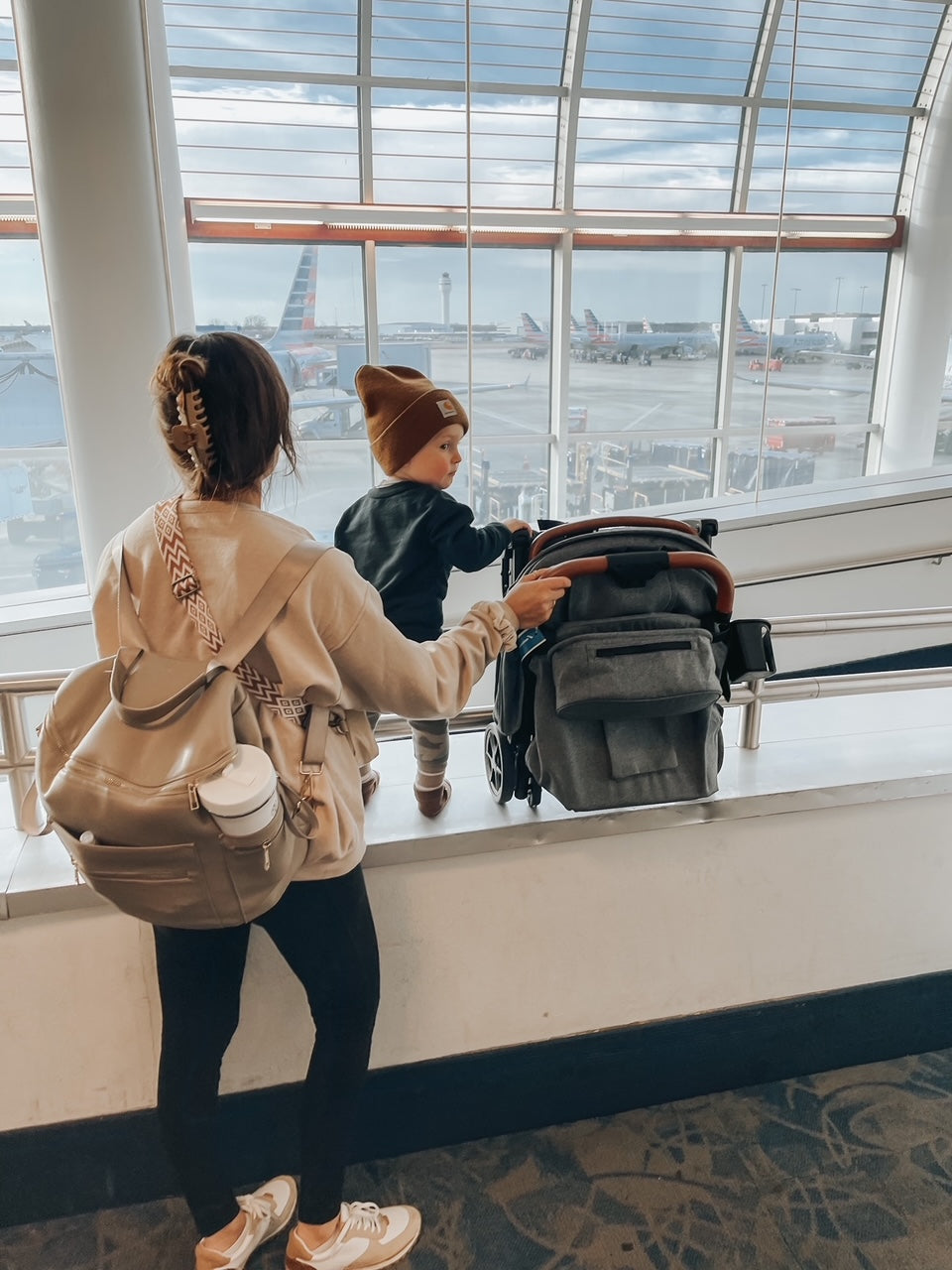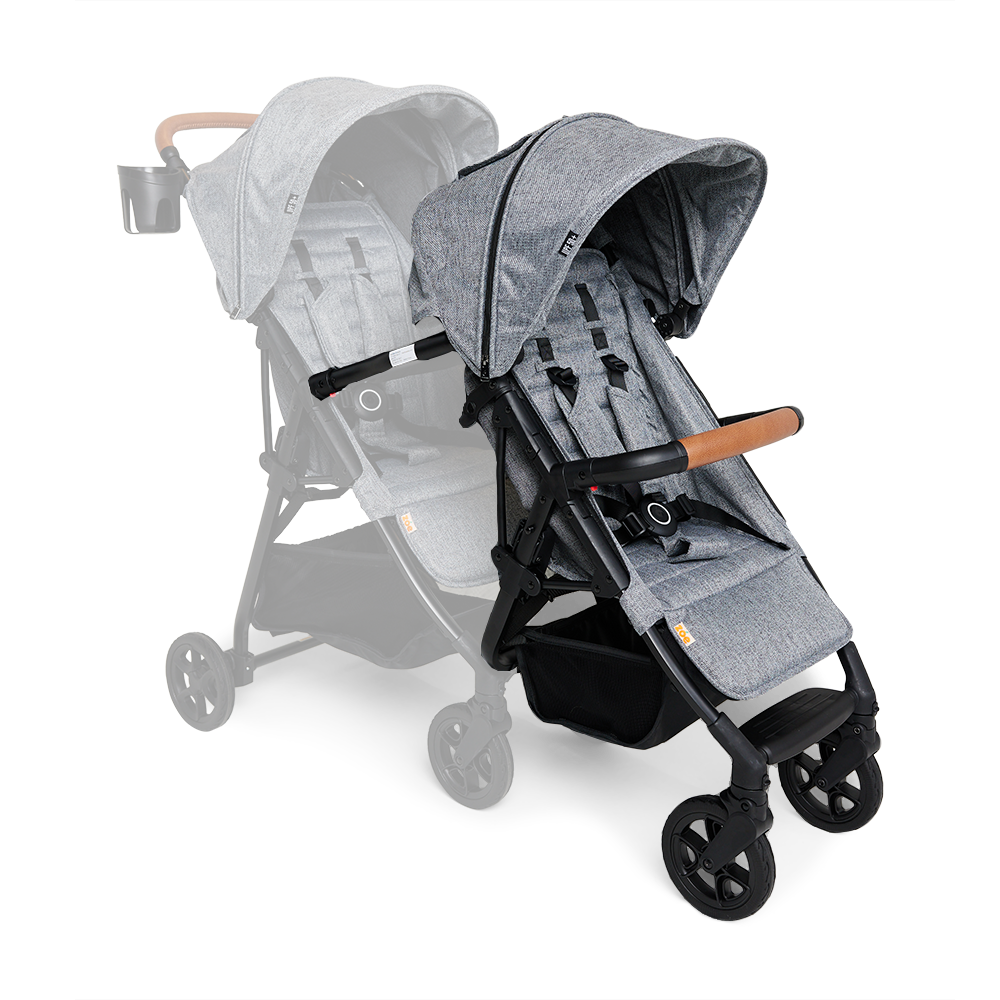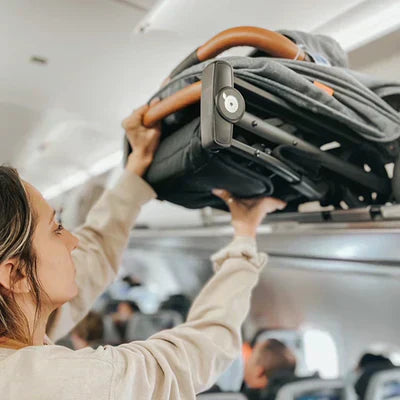Traveling With Kids: The Ultimate Guide for Parents of Babies & Toddlers

Planning Your Trip
- What’s the best age to start traveling with kids?
- How do I choose family-friendly accommodations?
- Do I need to buy a plane ticket for my baby?
- What are some of the best kid friendly travel destinations?
Packing
- What should I pack in a carry-on or diaper bag for flights?
- Do I need travel gear like car seat bags, strollers, or travel cribs?
- Does my child get their own luggage when flying?
- What should I pack for a trip to Disney?
- How do I pack pumped milk, formula, or baby food safely?
- What do I need to pack for pumping on the go?
- How do I pack pumped milk, formula, or baby food safely?
At The Airport & On The Plane
- How do I get through airport security with kids?
- What are the best strategies for flying with a baby?
- How do I keep toddlers entertained on long flights?
- How early should we arrive at the airport with kids?
- What baby gear (car seat, stroller, diaper bag) can I bring through security?
- What baby gear can I check (for free!)?
On The Road
On The Water
- Is cruising with young kids worth it?
- What are the best products for protecting my baby from the sun?
Sleep, Food & Routines on the Go
Traveling with kids can feel like a heroic feat — one that requires prep, flexibility… and a good sense of humor. Whether you’re taking your newborn on their first flight, road-tripping with a toddler, or figuring out how to juggle naps and snacks mid-adventure, we’re here to help!
Travel as a family may look different, but seeing the world through your kiddo’s eyes is a sweet adventure worth taking.
Check out answers to the most common questions parents have, with practical tips (tested in real life).
Planning Your Trip
What’s the best age to start traveling with kids?
There’s no “perfect” age, but babies under 6 months often travel surprisingly well since they’re portable and not yet mobile. When your babe is eager to walk (or crawl) yet doesn’t have an attention span long enough to get distracted? That can be the hardest time, BUT absolutely doable. By age 4–6, kids can enjoy the adventure more actively.
How do I choose family-friendly accommodations
Look for hotels or rentals with easy access to cribs, kitchenettes, and laundry (many offer baby gear, free of charge – be sure to check in advance!). Bonus points for on-site playgrounds or pools. Location matters more than luxury — staying close to attractions and food options saves your sanity.
Based on your travel goals and budget, ask: do we want a separate room (or porch) to hang out after early bedtimes? Is there a location that will keep you conveniently located to attractions – keeping you in walking distance? You may get to avoid car rentals if so!
Do I need to buy a plane ticket for my baby?
In the U.S., children under 2 can fly for free on your lap. You do still need to add them to your ticket as a ‘lap infant’ and sometimes pay taxes/fees (usually minimal on domestic flights).
Policies vary internationally, so always check your airline’s rules.
What are some of the best kid friendly travel destinations?
It all depends on your travel style, but consider:
Domestic
- Yellowstone National Park
- Smoky Mountains
- Destin (30A)
- Orlando
- San Diego
- Maui
International
- Costa Rica
- Iceland
- Tokyo, Japan
- London, England
- Paris, France
Packing for Little Kids
What should I pack in a carry-on or diaper bag for flights?
Think: survival kit. Essentials include diapers, wipes, extra outfits (for both child and parent – with a zip lock bag for dirty clothes), snacks, spill-proof cups, comfort items, baby-safe sanitizer, pacifiers or teething todays depending on age (can help with ear pressure), and lightweight entertainment. Always pack more than you think you’ll need — delays happen.
Do I need travel gear like car seat bags, strollers, or travel cribs?
A lightweight stroller makes travel much easier, even for older kids. It helps little legs during long days exploring and acts as a pair of extra hands for all your essentials. Car seat bags protect gear during flights and some come with additional warranties. There are sites like Baby Quip to rent gear like travel cribs if the hotel/AirBNB doesn’t have one and you like to pack light!
Does my child get their own luggage when flying?
Luggage is per ticket, not per person. If you’ve purchased a ticket for your kiddo, they’ll have the same luggage options available based on the airline’s policies.
What should I pack for a Disney trip?
Disney’s filled with magical memories, but you might want to fill your bags with essentials for long days at the park. Check out this Disney packing guide, these stroller packing tips and our know before-you-go list so you're ready for anything!
How do I pack pumped milk, formula, or baby food safely?
Breast Milk
-
Storage Bags or Bottles:
- Use breast milk storage bags or leak-proof bottles.
- Double-bag them in a freezer bag to prevent leaks.
-
Temperature Control:
- Fresh milk: Store in a small cooler bag with ice packs.
- Frozen milk: Pack tightly with multiple frozen ice packs.
-
Airport Travel Tips:
- TSA allows parents to carry reasonable amounts of breast milk through security (no need to fit in a quart bag or follow the 3.4 oz rule).
- Declare it at security and request hand inspection instead of X-ray if you prefer.
Formula
-
Powdered Formula (Best for Travel):
- Pre-measure powder into small formula dispensers or snack containers.
- Bring bottled or filtered water separately (buy bottled water after security if flying).
-
Ready-to-Feed Formula:
- Pack small, single-serve cartons if you want less prep.
- TSA allows them in carry-ons, just declare them at security.
-
Bottles:
- Pre-fill bottles with water, then add powder when needed.
- Use insulated bottle sleeves to keep warm water warm longer.
Baby Food
-
Pouches:
- Shelf-stable pouches are easiest for travel.
- Pack a few extra in case of delays.
-
Homemade Food:
- Store in leak-proof containers and keep cold in a small cooler with ice packs.
- Use within 24 hours if not frozen.
-
Snacks:
- Keep dry snacks in resealable bags or snack cups for easy access.
Cooler & Ice Pack Tips
- Pack everything tightly (less air = stays cold longer).
- Use multiple ice packs (one on top, one on bottom).
- A soft-sided insulated lunch bag fits under a stroller or in a carry-on easily.
- If your ice packs melt and you need more, ask flight attendants or airport restaurants for ice (double-bag it first).
What do I need to pack for pumping on the go?
We’ll include a comprehensive list below, but you may tweak it to fit your needs based on where you’re traveling/for how long. If you’re taking air travel, consider packing your pump in your carry on (instead of checked bag) in case of delays or lost luggage.
Pumps are considered a medical device and many airlines allow it in addition to your carry on bags (confirm with your airline)!
Pumping Essentials
- Breast Pump (manual or electric, plus charger or batteries)
- Extra Pump Parts (flanges, valves, membranes—pack spares in case something breaks)
- Pump Bag (backpack or crossbody for easy travel)
Milk Collection & Storage
- Bottles or Storage Bags (pre-labeled if possible)
- Permanent Marker or Labels (to mark time/date)
-
Mini Cooler Bag with:
- Multiple ice packs
- Optional frozen gel packs or frozen peas as backup
- Zip-Top Bags (for organizing or double-bagging milk)
Cleaning Supplies
- Travel-Sized Pump Wipes like these or sanitizing wipes
- Quick Clean Steam Bags (if you’ll have access to a microwave)
- Small Bottle of Soap (in a leak-proof container)
- Collapsible Basin or Silicone Sink Stopper for hotel sinks
Power & Convenience
- Car Adapter or Power Bank (if you’re not sure about outlets)
- Hands-Free Pumping Bra (game-changer for travel days)
TSA-Friendly Tips
- All pump gear and milk are medical supplies—they’re allowed through security.
- Keep pump parts and milk separate from your other liquids for easy inspection.
- Frozen or partially frozen ice packs are allowed; declare them if asked.
- If traveling internationally, bring a universal outlet adapter.
At the Airport & On the Plane
How do I get through airport security with kids?
Arrive early, use family lanes if available (TSA launched Families on the Fly program so more are coming), and know that you can bring formula, breast milk, and baby food through security (they may just need extra screening). Babywearing can be easier than wrangling a stroller in security lines.
If you’re traveling with a stroller, consider using packing cubes for your stroller basket needs. You’ll have to empty your stroller before going through security, and this can make it much faster! If you don’t have PreCheck, consider it if you’re a frequent traveler! Minors can join you in the PreCheck line without having their own.
What are the best strategies for flying with a baby?
Feed during takeoff and landing to help with ear pressure, pack extra diapers and clothes, and don’t be afraid to walk the aisle to soothe fussiness. Most passengers are more understanding than you expect. If they’re still napping a lot, you can also time the flight based on their sleep schedules.
How do I keep toddlers entertained on long flights?
Snacks are your first line of defense (snackle boxes can offer entertainment/variety while still travel-friendly). Then rotate activities: sticker books, headphones for kid-friendly shows, reusable drawing pads. Pack more than you think you need — novelty keeps kids engaged longer. Check out some recommended travel toys (pro tip: pack them in a toiletry bag for easy portability).
How early should we arrive at the airport with kids?
Heavily debated in our office (queue the type a, b and c parent memes), this all depends when and where you’re going (domestic vs international, on a slow day vs peak travel season). A good rule of thumb is add an extra 30-45 minutes for kiddo-related-delays.
What baby gear (car seat, stroller, diaper bag) can I bring through security?
Car seats, strollers (even double strollers), and diaper bags can go through security. If you’re not bringing them on the plane, you can gate check your car seat and/or stroller for free.
Your diaper bag is considered a necessity, not your personal item, so you can bring it in addition to your carry on. You’re also able to baby wear through security to keep your hands free.
What baby gear can I check (for free!)?
Most airlines let you check two pieces of baby gear for free (confirm with your airline). This can include: car seat, stroller, pack n’ play / portable crib, travel bassinet, infant carrier, and booster seat.
On the Road
How often should we stop on a road trip with toddlers?
Plan breaks every 2–3 hours for bathroom breaks, stretching, and snacks. Parks, rest stops with play areas, or even fast-food playgrounds can burn energy.
What are road trip must-haves for toddlers?
Car seat-safe snacks, small toys rotated throughout the drive, a cozy blanket, and mess-friendly activities like stickers or water pens. Don’t forget cleaning wipes and a small trash bag. Check out some tips for car-friendly entertainment.
On the Water
Is cruising with young kids worth it?
For many, the answer is yes! Cruises for families with young ones can offer a nice balance between adventure and relaxation with many offering kids’ clubs, toddler splash zones, and family cabins. There is also the benefit of ‘all-inclusive convenience’ to lighten the mental load at mealtimes. Consider researching family-friendly cruise lines with age-appropriate shore excursions.
What are the best products for protecting my baby from the sun?
Consider sunscreen designed for babies (depending on age) and a sun hat. Experts don’t recommend sunscreen on babies under 6 months. If your baby is this age, consider sun-protective clothing, hats and shade for extended periods (blankets can help with shade when you don’t have other options, but confirm their SPF level if this is your primary sun protectant). Dermatologists recommend SPF 40–50+ and water resistance of at least 40–80 minutes. Reapplication every two hours—or sooner if sweating or swimming—is essential.
Sleep, Food & Routines on the Go
How do I handle naps and bedtime when traveling?
Recreate familiar sleep cues (same blanket, sound machine, bedtime book). Keep routines flexible but recognizable. Jet lag and schedule shifts are normal — give yourself grace. If you’ve made a big timezone shift, usually after a couple of nights in you will all adjust!
What are the best snacks and meals for kids on the go?
Pack familiar, low-mess snacks: pouches, crackers or rice cakes, cut fruit and/or veggies, trail mix, snack bars. Always keep a “backup stash” in case of delays. For meals, opt for kid-friendly restaurants or order sides and build a mini-meal.
How do I help my child adjust to jet lag?
Expose them to natural light as soon as you arrive, keep bedtime routines consistent, and adjust schedules gradually if possible. Expect some crankiness — it passes faster than you think! Depending on how long your trip is (and how big the timezone shift is), you can start slowly shifting their bedtimes leading up to the trip to help get them on the new schedule. Others choose to ‘rip the bandaid’ and try to immediately shift to the new location’s time.
Another helpful consideration is keeping the first few days of your trip more lowkey to accommodate disrupted sleep schedules. Consider weaving in coffee at a playground or time at the beach!
Traveling with little kids is rarely effortless, but it’s always memorable. With the right prep, you can shift from survival mode to actually enjoying the journey. Every trip gets easier, and every adventure adds to your family’s story.




















